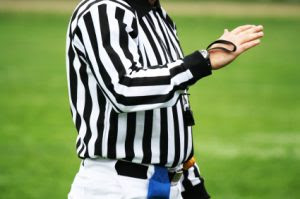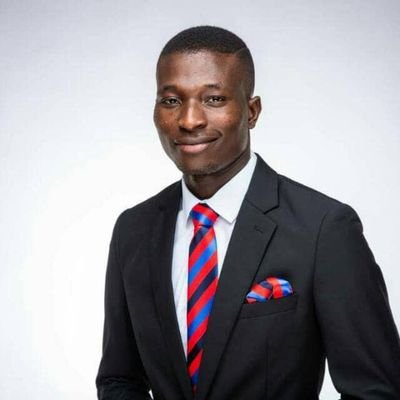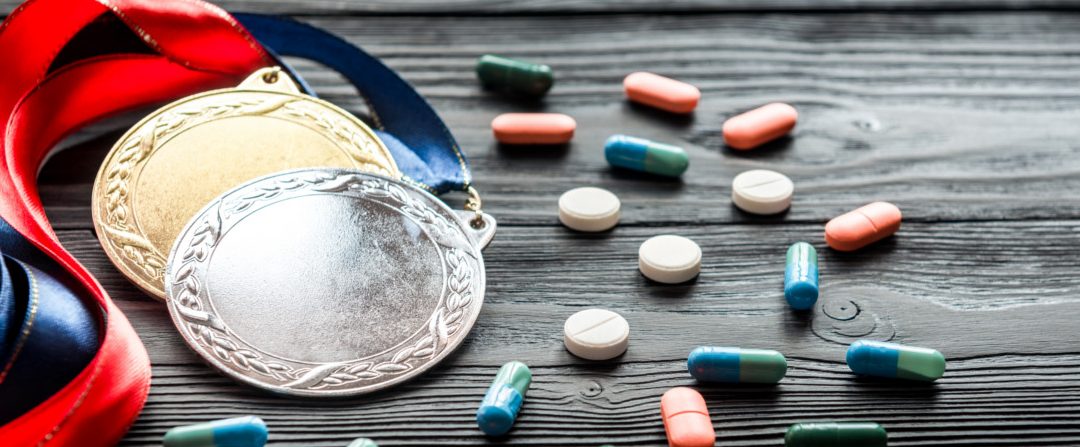
by Legalnaija | Nov 6, 2023 | Blawg
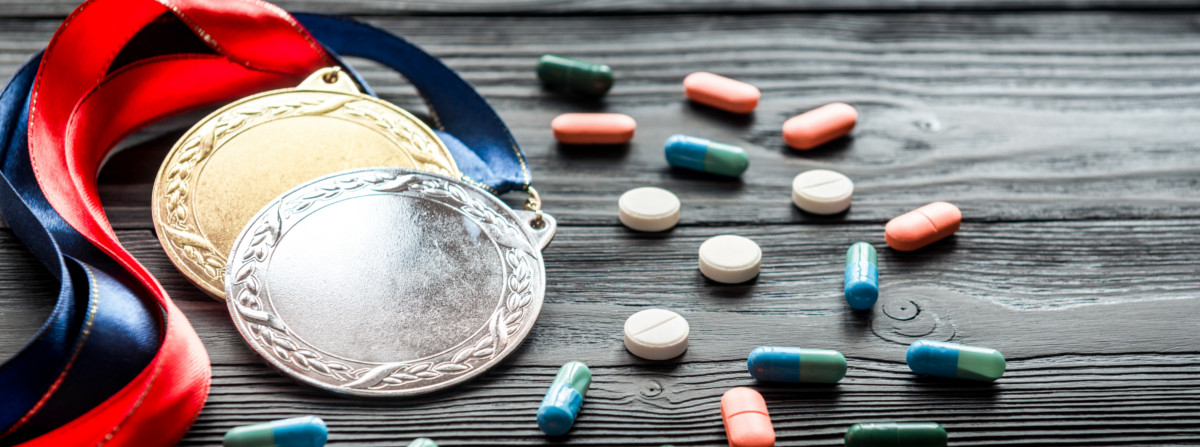
Sports right from its inception has predominantly been for entertainment purposes. However, the concept of rewarding winners in these sporting competitions and the egoistic nature of man have made sports more than just entertainment for these athletes, who also want to be recognized as some of the best in their field.
It is often misconceived that the ban on the use of performance-enhancing drugs in sports was just to eliminate the undue advantage that these persons have against their opponents who do not use these drugs. While this was an important factor taken into consideration in the full deliberation, another factor was also as important if not more important. This factor is the issue of the health of these athletes who partake in the use of these drugs. The intake of some of these banned substances can lead to Cardiovascular problems, liver and kidney damage, lead athletes to addiction, and many other temporary and permanent health concerns. The dangers of these performance-enhancing drugs have led to the formation of several organizations and agencies to help regulate the growing issue of doping, one of these organizations is the World Anti-Doping Agency (WADA)
World Anti-Doping Agency (WADA)
The World Anti-doping Agency is an organization set up on 10 November 1999 in Lausanne, Switzerland. The International Olympic Committee (IOC) spearheaded the motion to establish this foundation to combat the ever-growing concerns of doping in the sports ecosystem. The agency’s official headquarters is situated in Montreal, Quebec, Canada while the office at Lausanne now serves as the regional office in Europe.
WADA works in collaboration with many national and international sports federations, and other stakeholders to establish and enforce the World Anti-Doping Code, a set of anti-doping rules and regulations that apply to all athletes and support personnel worldwide. This agency maintains a prohibited list of substances and methods that are banned in sports, it is a flexible list and it gets updated annually to reflect different research in the field of medicine.
The interference of different regulatory bodies on the issue of doping in sports is predicated on well-analyzed reports pointing towards the short and long-term negative impact of doping on not just the athletes but also the sports events involved and most importantly, sports in general.
“Sanctions serve as a lesson for Wayword deeds” mischievous actions that defy the norms, can trigger reactions, unleashing storms. Sanctions can befall, harsh yet fair, a price to pay for those who dare. Sanctions are provided under regulations that are set to keep the chaos in check.
The Legal Repercussions of Using Performance-Enhancing Drugs in Sports
The idea of law and sanctions in curing mischief is based on the principle that individuals who engage in harmful or unethical behavior should be held accountable for their actions and face consequences as a deterrent to future wrongdoing. The use of laws and sanctions to prevent mischief can take many forms, including fines, imprisonment, community service, and other forms of punishment. Laws and sanctions can serve as a means of deterrence by sending a clear message that certain behaviors are not acceptable and will be met with consequences. They can also provide a sense of justice to victims of mischief and serve to restore public confidence in the rule of law.
The legal implications of using performance-enhancing drugs in sports carry jurisdictional flavor meaning that different jurisdictions treat their cases differently but in generality, the issue of doping in sports is no light matter. A critical appraisal of this is best done by examining some of the legal implications enforced by most internationally recognized sports organizations such as the International Olympics Committee (IOC), Fédération Internationale de Football Association (FIFA), world Anti-Doping Agency (WADA), Union of European Football Association (UEFA) and so on;
- Disqualification and Forfeiture Medals and Prizes: This is predominantly what most sports organizations go with and some of the world’s greatest athletes have been on the receiving end of this. Ben Johnson, a Canadian former sprinter, was widely recognized as one of the world’s fastest men. In the 1988 Seoul Olympics, Ben Johnson came through, grabbing with him both the gold medal in the 100m sprint and more impressively shattering the world record at that time, finishing with a time of 9.79 seconds. However, he was to enjoy this galore for just a few days as the International Olympic Committee (IOC) sanctioned him for doping, amongst many other sanctions handed him were disqualification from the race and making him forfeit his gold medal. Ben Johnson was found to have tested positive for the anabolic steroid stanozolol, which is a synthetic steroid that is commonly used by athletes to enhance their performance by increasing muscle mass and strength.
- Payment of Fines: Several factors impact the weight of the fine to be levied on athletes caught doping, the substance taken, the financial strength of the athlete, how many times the athlete has been found in violation, and the governing body sitting on the case. Fines as high as $250,000 have been slapped on athletes for doping as seen in the popular 2016 case of Tennis star, Maria Sharapova. Sharapova tested positive for a banned substance, Meldonium at the Australian Open. Meldonium is believed to improve endurance, reduce fatigue, and enhance recovery time, which could provide an unfair advantage to athletes who use it. Its ban has been a controversial topic in the sports world as it has been argued that evidence of its performance-enhancing effects is not strong enough to warrant a ban, but it is still recognized as a banned substance and still makes the list of banned substances according to World Anti-Doping Agency (WADA).
- Contractual Disputes: Sponsors and employers who are contracted to these athletes most times have zero tolerance for doping and often include doping in the termination clause as a cause to terminate the contract between them and the athletes. In some situations, things get messy to the extent that parties involved in the contract are before the court seeking its intervention. In the 2016 case of Maria Sharapova, after the tennis star tested positive for the banned substance, she lost several endorsement deals, one from Nike. Sharapova instituted legal proceedings against Nike, arguing that Nike had breached the contract between them as they did not provide her with sufficient notice and an opportunity to cure any breach before terminating the contract. In the end, Nike agreed to pay Sharapova an undisclosed amount, it was reported that Sharapova would receive compensation for the remaining value of her contract with Nike, which was worth about $70 million over eight years.
- Criminal Charges/Investigation: Largely doping does not attract criminal charges but in some jurisdictions, effective efforts have been made toward strictly policing doping. In Germany, there is the Germany Anti-Doping Act. The act was enacted in 2015 and it criminalizes the use, possession, and distribution of doping substances. This law applies to every sport in Germany. Athletes who obtain banned substances through prescription fraud, such as forging prescriptions or obtaining them through unlicensed sources can face criminal charges in the United States of America for charges related to fraud and drug trafficking.
- Ineligibility for Future Events/Tournaments: Athletes found guilty of violating anti-doping regulations, most often are suspended from competing in future tournaments at least for a limited timeframe. Maria Sharapova was suspended from competing in any tennis event for 15 months by the International Tennis Federation. In some cases, even when the period of suspension is over, some tournament organizers are reluctant to invite these athletes to their events. Justin Gatlin is a true victim of organizers’ reluctance to invite athletes with past doping records. In 2015, the organizers of a Diamond League track and field meeting in Shanghai, China, refused to send out an invitation to Gatlin citing their policy of not inviting athletes who have been convicted of doping charges.
- Loss of Records: Numerous world records set in the past have been expunged from history and it is now like they never happened just because the athletes with these records are doping. It is important to note that testing positive for banned substances even after the tournament could be enough to erase the record set. Sometimes suspicions might lead to an athlete getting tested after the event. However, the type of banned substance and the organization governing the tournament will determine the severity of the case.
- Reduced Funding: It is not inconceivable that events rocked by the doping crisis will find it tough to secure funds for subsequent events. Just as in the case of sponsorship for athletes, brands do not want to work with organizations or persons that will smear the brands’ image in the eyes of the public. The Tour de France, which is one of the most recognized cycling races in the world lost one of its most dominant sponsors, Credit Lyonnais as a result of several consistent doping scandals in the sport.
- Increased Regulations on doping matters: Laws and regulations have always been a means of encouraging positive behavior and curtailing mischievous habits. It is these tools that organizations and event organizers employ to restrain players from resorting to doping. These regulations are sometimes made stricter and drug tests more frequent in such a way that it becomes practically impossible to dodge.
CONCLUSION
Athletes are responsible and strictly liable for any substance found in their bodies and as so athletes are to treat their bodies as a temple. The athlete is to handle his/her body as a job and be very cautious of all food intake and products they use on their body. Medications and supplements taken by these athletes might contain banned substances that the athlete unknowingly consumes. There is a possibility that an environment heavily polluted with banned substances can be dangerous to the athlete as he/she might inhale enough concentration that can show up during drug tests. It is advised to be well aware of all banned substances to avoid mistakes along the way. Doping has ruined many careers and erased many established careers just like Lance Armstrong who had all his cycling accolades taken after it was found that he was doping his whole career. Doping generally undermines the integrity of sports and will always be given zero tolerance.
Relevant Materials
- “Maria Sharapova Sues Nike Over Termination of Contract After Doping Scandal.” The Guardian, 14 Mar. 2018, theguardian.com/sport/2018/mar/14/maria-sharapova-sues-nike-over-contract-termination-after-doping-scandal.
- “About Us.” World Anti-Doping Agency, https://www.wada-ama.org/en/about-us.
- “Prohibited List.” World Anti-Doping Agency, https://www.wada-ama.org/en/what-we-do/prohibited-list.
- https://www.nytimes.com/2013/10/23/sports/cycling/lance-armstrong.html
- https://www.wada-ama.org/en/what-we-do/prohibited-list
- https://www.nytimes.com/2006/07/30/sports/30iht-doping.2322317.html
- https://www.theguardian.com/sport/2015/nov/05/justin-gatlin-olympic-sprinter-banned-doping-offence
- Photo: www.procon.org
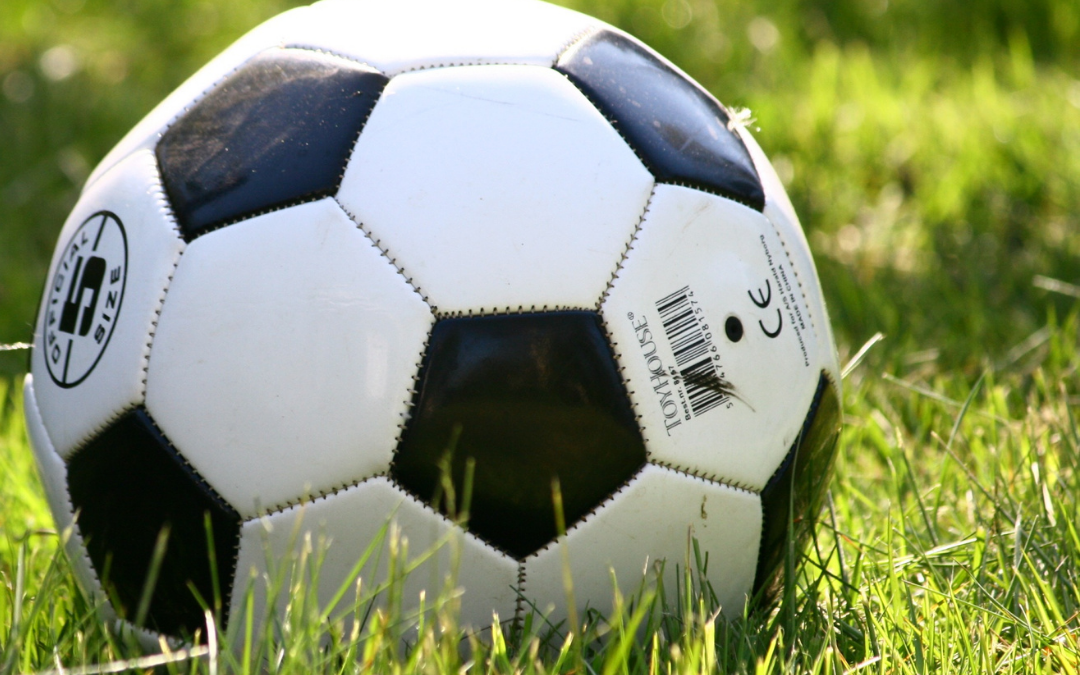
by Legalnaija | May 5, 2021 | Uncategorized
The world of sport has fast become a billion-dollar entity, morphing from a mere recreational activity to a financial and economic haven. In its own right, sporting activities account for over 3.7% of the aggregate GNP of the twenty-eight EU states. It is also responsible for over 3% of world trade. It employs fifteen million people in the EU, which is about 5.4% of the entire European labor force. In December 2020, NBA superstar Giannis Antetokounmpo agreed to sign a five-year contract extension with the Milwaukee Bucks worth $228.2 million, in what is the largest deal in NBA history today[1]. Barcelona FC conceded in January 2021 that Lionel Messi indeed earned $167 million a year on a 4-year contract he signed in 2017[2].
Evidently, sport is now bigger than it has ever been, in terms of its lucrativeness and the human resource it employs. It is only natural that in an industry with so much money and people, there would exist a barrage of laws. Although there is no defined and distinct ‘sports law’, it is governed by the basic principles found in our civil and criminal laws.
Arbitration is the primary dispute resolution mechanism employed in sport, with the Court of Arbitration for Sports (CAS) the apex Court for this purpose. The CAS recently overturned the UEFA’s club financial control body (CFCB) decision banning Manchester City FC based on allegations that the club is involved in serious breaches of financial fair play regulations. Recent trends in sports have shown that intellectually property is increasingly regarded as a major source of value and revenue and is thereby heavily guarded. This article focuses on these intellectual property considerations in sports law.
IMPORTANCE
Intellectual Property Rights herein referred to as ‘IPRs” play a massive role in the world of sports, especially in terms of copyright and trademarks. This is because they enable the protection of rights and in this regard, sports branding and marketing, which in turn boosts the successful commercialization of Sports events; major sport events like the Olympic games, the FIFA World Cup, WrestleMania among others are built around IPRs.
One could argue that without the IPRs, these events would not hold. Simply because, nobody wants to pay a ton of money to sponsor sports teams, athletes or events, and not have rights to safeguard such investments. IPRs is the recognized law which breeds confidence in investors or sponsors to part with money and invest in sports because they know such rights, will be legally exploitable and also enforceable in cases of breach. IPRs are not only of importance to sponsors but also to athletes, organizations and personalities.
In marketing sports events, IPRs are important for the aforementioned reasons. The issues with marketing sports events in most common law jurisdictions is the fact that a sporting event as a whole cannot be protected, “A spectacle cannot be owned in any ordinary sense of that word.”[3] This means that a sporting event is legally not a property that can be protected on its own rights. What happens therefore in practice is, potential marketers and investors in sporting events would have to focus on properties within the event which can be legally protected.
This element further raises the level of importance attached to trademarks and copyright. Special note should be taken on the importance of registered ‘domain names’ for sports bodies who use this domain names to promote, market and commercialize sporting events, organizations and personalities. In practice, these domain names serve as quasi trademarks and most times, it gives corporate identity with commercial and cultural goodwill[4].
LEGAL PERSONALITY AND GOODWILL
Goodwill generally is an intangible asset in relation to the acquisition of a company or business by another. Goodwill is an essential asset of any enterprise because the core essence of its existence is embedded into it. The spectators and supporters of a sports organization or federation are to a great extent its customers, as their passion for their favorite sports team/event makes them follow with unquestionable enthusiasm. Asides the proprietary interest in goodwill, there are also personality interests. Personality rights are not limited to natural persons, as juristic persons like companies also have personality rights like reputation and identity.
Goodwill as well as reputation is intricately related to identity. Identity entails a wide range of things including specific products of an enterprise and the pattern in which it is packaged. In relation to sports federation as an enterprise, the “product” is the sports events and its identity is echoed in the tournaments, events or matches which uniquely differentiates it from other sports federations or bodies.
For instance, when one thinks of the International Federation of Association Football (FIFA)World Cup, it automatically gives you an image of the FIFA world cup trophy (18carat gold with bands of malachite on its base)[5], the blue FIFA flag with the organization logo in the middle, the FIFA anthem, the grand opening of the ceremony, the idea of it being a football game amongst the member countries, the recognitions and awards, and so on. These are essential characteristics of the identity of FIFA, and same can be said for other sports federations and tournaments they represent. It is these identifications that make it easy for a football fan to differentiate a premier league game from the German Bundes liga.
The identity right of FIFA in the above is breached where another person uses these distinct features which are primarily attributable to the Association for commercial gains without authorization. The core element of this breach is that the use was for a commercial purpose which is solely aimed at promoting a product or service to attract customers. The unlawfulness in this case is mainly vested in the violation of the right to freedom of association and the commercial exploitation of the individual or company.[6]
PROTECTION
Sporting International organizations in most cases explore various avenues to protect their IPRs. For example, the Olympic Charter in Article 7[7] contains provisions which provide strict safeguard for these IPRs. It provides among others that, “The International Organizing Committee (IOC) is the owner of all rights in the Olympic Games and Olympic properties described in this Rule, which rights have the potential to generate revenues for such purposes.
It is in the best interests of the Olympic Movement and its constituents which benefit from such revenues that all such rights and Olympic properties be afforded the greatest possible protection by all concerned and that the use thereof be approved by the IOC”. This point is further buttressed by paragraph 2 of Article 7 of the same Olympic Charter, which provided that “The Olympic Games are the exclusive property of the IOC which owns all rights and data relating thereto, in particular, and without limitation, all rights relating to their organization, exploitation, broadcasting, recording, representation, reproduction, access and dissemination in any form and by any means or mechanism whatsoever, whether now existing or developed in the future”[8]
This provisions show that the IOC have taken necessary steps to protect their brand. This protection goes beyond protecting the basic ‘properties’, but also the cultural goodwill and the commercial viability of the organization. In practice, along with the Olympic Charter, the IOC would need to have legislations passed by host cities to prevent ambush marketing. Host cities are also obligated to implement ‘brand protection programs’[9].
An instructive case study for this is the series of Intellectual Property cases that both FIFA and the Local Organizing Committee (LOC) of the 2010 FIFA World Cup had to battle against in South Africa, a decade ago. About 450 cases where filed against said offenders of these IPRs[10]. FIFA and the LOC’s campaign for protection of IPRs is probably one of the biggest in Sports history, as an extensive list of trademark registrations was released which demonstrated the paramount importance Sports organizations place on protecting their brands in terms of organization, staging and commercialization.
On the issue of FIFA and World Cups, in preparation for the 2014 World Cup, FIFA had 13,000 trademarks registered worldwide, 1160 of them registered for the World Cup and 400 occurred after the passage of the World Cup Law in Brazil, which was a law passed to prevent this ambush marketing[11]. This protection goes beyond, sports organizations or committee, and includes franchises who can file trademark applications for team names, logos and mascots.
Individual athletes also feel the need to create their own brands, gain endorsements and gain financially from trademarking names, initials, catch phrases or celebrations. In football and basketball, these are known as ‘image rights’, which allows a player employed with an organization to also gain value from the use of their images that is unconnected to their employer’s brand.
LANDMARK CASES OF TRADEMARK IN SPORTS
BARCELONA FC TRADEMARK CASE
In April 2013, Barcelona Football club (Barcelona) applied for the registration as a community (EU) Trade Mark of the silhouette of its crest in relation to a range of goods such as paper goods, stationery, clothing, footwear, headgear and even some sports activities. The Office for Harmonization in International Markets (OHIM) now known as the European Union Intellectual Property Office (EUIPO), which is the body responsible for the registration of community trademarks, rejected the application on the grounds that the mark lacked distinctiveness, and therefore did not meet the basic requirement for registration. Barcelona appealed until it got to the EU General Court, where they also dismissed the appeal and ruled that:
- The crest silhouette is not capable of attracting the attention of consumers as a sign indicating the origin of the goods/services carrying that mark.
- The silhouette of a crest does not differentiate itself much from the basic shapes generally used in various commercial sectors as a decorative element.
- Therefore, the crest silhouette does not possess the inherent distinctive character[12]
WASHINGTON REDSKINS TRADEMARK CASE
There has been a legal fight which has persisted for about twenty years over the use of the Redskins team name by the Washington Redskins American Football club. The court in a ruling ordered the United States Federal Trademark and Patent Office to cancel several trademark registrations held by the club in respect of this name, on the ground that the name ‘Redskins’ may be reproachful to Native Americans, who have objected to the name for decades, while also citing dictionary entries stating that the name is considered to be offensive.
However, the present ruling does not prevent the club from using the name although the legal implication is that the name would no longer enjoy the full legal protection attributable to a federally registered trademark.
INTELLECTUAL PROPERTY RIGHTS IN THE NIGERIA SPORTS SECTOR
Speaking particularly about the branches of Intellectual Property in Nigeria, we shall begin the discussion with Patents. Patents can be defined as the legal rights vested on inventors of new and useful products and processes, the right to exclude all others from commercially exploiting the invention. It is a right that rewards, ingenuity of thought. It ensures the author of the invention is afforded legal recognition and protection.
Once a patent has been registered in Nigeria and indeed around the world, it prevents those not afforded the rights from exploiting the use of that invention for commercial purposes. Patent protects the authors time, effort and resources used in producing a new invention. The author or patentee then holds the patent to such invention for the next twenty years (Section 7(2) of the Patents and Designs Act)[13]
In Nigeria today, the Sports industry, is still lacking behind the rest of the world in terms of industrialization and technological development. Instead we continue to reap the reward of the invention of others. One can confidently speak on and say that patent is the least utilized IPR in Nigeria. It is also key to state that, Sports people and inventors should not be deterred from being creative. The resources or platform may not be there, but one can never truly know, when his invention is the next best thing.
Copyright is another branch of IPR that seems to not exist in the Nigeria Sports industry. This branch of IPR is not only infringed on, but one might argue it is abused in Nigeria. This is because local markets are field with all sorts of fake jersey’s, scarfs, cups, slippers, boots etc. Essentially copyright is a right which protects the expression of an idea in a definite form and gives rights to the creator or owner the right to sell, produce, reproduce that expression of idea for their commercial benefits. This could be by themselves or another via through a testamentary deposition or grant of license.
The areas of sports where copyright abounds are the merchandise, Television and media rights literature contained in match day programs sold to fans, ticket sales, the software of computer and online games. In Nigeria most of the aforementioned being copied without permission. This also seems to discourage creativity as inventors do not see the means to commercialize their ideas, the protection afforded to them or the penalties for infringement are not stiff enough to encourage inventors.
Another branch of IPRs are Trademark. This along with copyrights are the most popular IPRS. Trademarks has its rights embedded in the very things we see everywhere when it comes to Sports. From logos, team names, league names, sporting goods, broadcasting and apparel. It is essentially anything that gives a brand an identity, such as symbols, crests, logos, catch phrases or anything that distinguishes the products (goods/services) of one business to another.
Trademarks are important as they allow supporters recognize easily the brand they are associated with. Naturally, trademarking would lead to good commercial output. For example, seeing the Nike tick or Puma jaguar would tell one that such product is that of Nike or Puma and they guarantee quality. Various forms of trademarking exist which include registering of nicknames by sports celebrities, catch-phrases, mascots.
It is clear that in Nigeria we are behind most of the world in Intellectual Property rights. The need to develop commercially potent brands that would compete transnationally, is at an all-time high. A major issue with the lack of protection or platform for inventors to develop in Nigeria is the fact that, Nigerian Sport is generally managed and controlled by the government. With that, it is difficult to allow businesses in the industry genuinely grow. At the end of the day, no one wants his/her efforts to be wasted without gains, and this extends to possible investors and stakeholders in the sport industry
The U.S Chamber International IP Index 2021[14], Nigeria ranks 47 of 50 countries in the assessment of economies whose intellectual property systems provide a reliable basis for investment in the innovation and creativity lifecycle[15]. This is a damning report, because it proves most of the aforementioned faults of the legal framework for IPRs in Nigeria. It is a challenging environment for the prosperity of goods and involves a high right of physical counterfeiting and online piracy remains high and public awareness of the value of IP remains low.
Just like in most Common Law jurisdictions, in Nigeria there are statutory protection for regular trademark, and the doctrine of passing off is also applicable. Laws and regulations established for the protection and administration of intellectual property rights include: the Copyright Act[16] , the Patents and Designs Act[17], the Trademarks Act[18], and so on.
The courts have not interpreted the provisions of the Nigerian Trademark Act to include marks from the sporting industry, and this may be likened to the fact that the sports jurisprudence in Nigeria is not as developed as it is in other jurisdictions like Europe and the United States of America. Nevertheless, it merely provides enough general covers that sport brands can explore in order to fully relish the benefits attached to IPRs for stakeholders. In the Nigerian sporting sector, the provisions of the Trademark Act and the Common Law doctrine of passing off must be fully utilized, as they are still vastly underutilized.
It is highly recommended that organizers of sports events should always protect their event marks by adopting the provisions of the Trademark Act which is similar to the provisions of the UK Trademark Act.[19]It is also suggested that every state with a sporting presence should enact a Law that would provide a mirrored protection available in the Federal Act enacted by the National Assembly.
For instance, the Nigerian Premier Football League (NPFL) can have an Act titled ‘The Nigerian Premier League Event Mark and Related Rights Act’ to be adopted by the various state governments. This would serve as the principal protection for all the marks associated with the NPFL throughout the Federation while the Trademark Act serves as secondary or ancillary protection for the football league.[20]
The importance of a proper shield of sports events marks in Nigeria cannot be overemphasized, as it would allow owners to exclusively exploit their marks for economic and financial gains. This can serve as a booster to the confidence of prospective sponsors and business partners, as it gives a sense of security for their investments.
CONCLUSION
With the rising enthusiasm and passion of individuals in the sporting sector, it will be highly disappointing if the full potentials of intellectual property rights in sports activities are not utilized to the maximum. In a bid to achieve this and protect the rights of stakeholders in this sector, it becomes pertinent that professional sport clubs and sport event organizers within Nigeria maintain the global standard.
In addition, the Legislative and Judicial bodies in Nigeria, are advised to amend and adjust our laws to toe the line of international sporting communities while considering our local circumstances, as the legislature governing intellectual property and by extension sports, are somewhat anachronistic.
The judiciary also, do not provide a hasty and less adversarial means of dispute resolution mechanism, hence, more people involved in sports should seek resources in arbitration, and make more use of avenues like the Lagos Court of Arbitration. All these measures would be to the national benefit as the economic and cultural benefits of hosting sporting events in a city or a country are always astronomical.
BIBLIOGRAPHY
STATUTES
Cap C28, Laws of the Federation, 2004
Cap P2, Laws of the Federation, 2004
Cap T13, Laws of the Federation, 2004
- 1 (1) of the UK Trademark Act, 1994
Article 7 of the Olympic Charter
Article 7, Paragraph 2 Olympic Charter
CASES
General Court of the European Union Press Release No 144/15, Luxembourg, 10 December 2015, Judgment in Fútbol Club Barcelona v OHIM, Case T-615/14.
Victoria Park Racing and Recreation Grounds Co Ltd v Taylor [1937] 58 CLR 479
Wells v Atoll Media (Pty) Ltd [2010] 4 All SA 548 (WCC).
ONLINE SOUCRES
Allen Kim (2020) Giannis Antetokounmpo signs largest deal in NBA history with Milwaukee Bucks https://edition.cnn.com/2020/12/15/us/giannis-antetokounmpo-contract-spt-trnd/index.html
Blackshaw I.S. (2017) IP and Sport. In: International Sports Law: An Introductory Guide. Short Studies in International Law. T.M.C. Asser Press, The Hague. https://doi-org.gcu.idm.oclc.org/10.1007/978-94-6265-198-2_5
FIFA.com https://www.fifa.com/who-we-are/news/the-fifa-world-cuptm-trophy-517161 Accessed 4th Jan 2021
George Ramsey (2021) Barcelona denies responsibility for leak after report reveals Lionel Messi’s record $672 million contract https://edition.cnn.com/2021/02/01/football/lionel-messi-barcelona-contract-spt-intl/index.html
BOOKS
Owen Dean “Sport as a Brand and its Legal Protection in South Africa”, ‘Global Sports Law and Taxation Reports’, March 2012 pp 41
Ugochukwu Johnson Amadi (2017); Intellectual Property Rights in Sports: African Sports Law and Business Bulletin
[1] George Ramsey (2021) Barcelona denies responsibility for leak after report reveals Lionel Messi’s record $672 million contract https://edition.cnn.com/2021/02/01/football/lionel-messi-barcelona-contract-spt-intl/index.html
[2] Blackshaw I.S. (2017) IP and Sport. In: International Sports Law: An Introductory Guide. Short Studies in International Law. T.M.C. Asser Press, The Hague. https://doi-org.gcu.idm.oclc.org/10.1007/978-94-6265-198-2_5
[3] Victoria Park Racing and Recreation Grounds Co Ltd v Taylor [1937] 58 CLR 479
[4] Blackshaw I.S. (2017) IP and Sport. In: International Sports Law: An Introductory Guide. Short Studies in International Law. T.M.C. Asser Press, The Hague. https://doi-org.gcu.idm.oclc.org/10.1007/978-94-6265-198-2_5
[5] FIFA.com https://www.fifa.com/who-we-are/news/the-fifa-world-cuptm-trophy-517161 Accessed 4th Jan 2021
[6] Wells v Atoll Media (Pty) Ltd [2010] 4 All SA 548 (WCC).
[7] Article 7 of the Olympic Charter
[8] Paragraph 2, Article 7 Olympic Charter
[9] Blackshaw I.S. (2017) IP and Sport. In: International Sports Law: An Introductory Guide. Short Studies in International Law. T.M.C. Asser Press, The Hague. https://doi-org.gcu.idm.oclc.org/10.1007/978-94-6265-198-2_5
[10] Owen Dean “Sport as a Brand and its Legal Protection in South Africa”, ‘Global Sports Law
and Taxation Reports’, March 2012
[11] Ibid 11
[12] See General Court of the European Union Press Release No 144/15, Luxembourg, 10 December
2015, Judgment in Fútbol Club Barcelona v OHIM, Case T-615/14.
[13]
[14] Global Investment Journal: U.S Chamber International IP Index https://www.theglobalipcenter.com/report/ipindex2021/
[15] Supra n14
[16] Cap C28, Laws of the Federation, 2004
[17] Cap P2, Laws of the Federation, 2004
[18] Cap T13, Laws of the Federation, 2004
[19] See S. 1 (1) of the UK Trademark Act, 1994
[20] Ugochukwu Johnson Amadi (2017); Intellectual Property Rights in Sports: African Sports Law and Business Bulletin
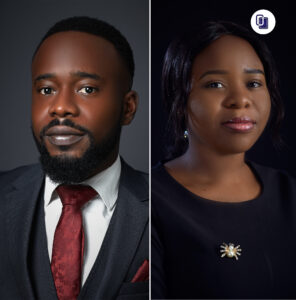 Written by: TUALE CHARLES AJUYAH and NNADI, EZINNE TOCHUKWU
Written by: TUALE CHARLES AJUYAH and NNADI, EZINNE TOCHUKWU
Tuale and Ezinne are Associate at Omaplex Law Firm.
Tuale, is a sports and entertainment lawyer who represents a wide variety of Nigerian and international clients including television broadcasters, Sport and Entertainment personalities, media companies, sports governing bodies, global brands and buddings musicians.
While Ezinne is a member of the Firm’s Dispute Resolution Team with a focus on intricate Civil Litigation. She has an outstanding experience in contract and business disputes. She has represented major debtors and creditors in high-profile Debt Recovery proceedings.


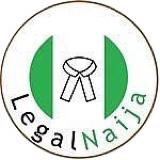
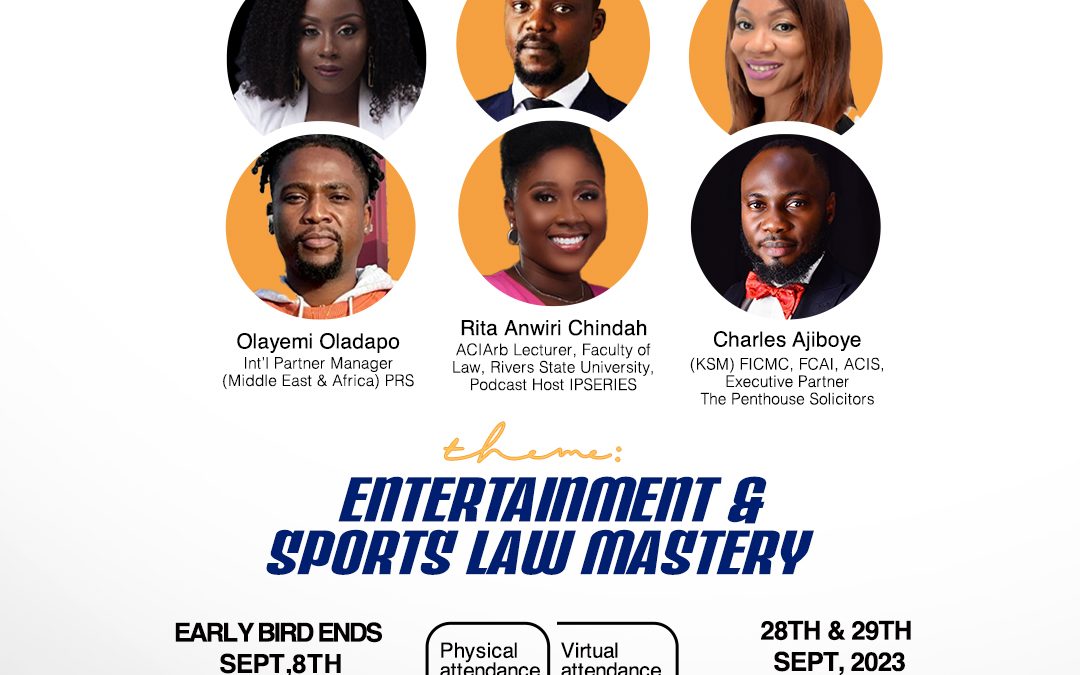
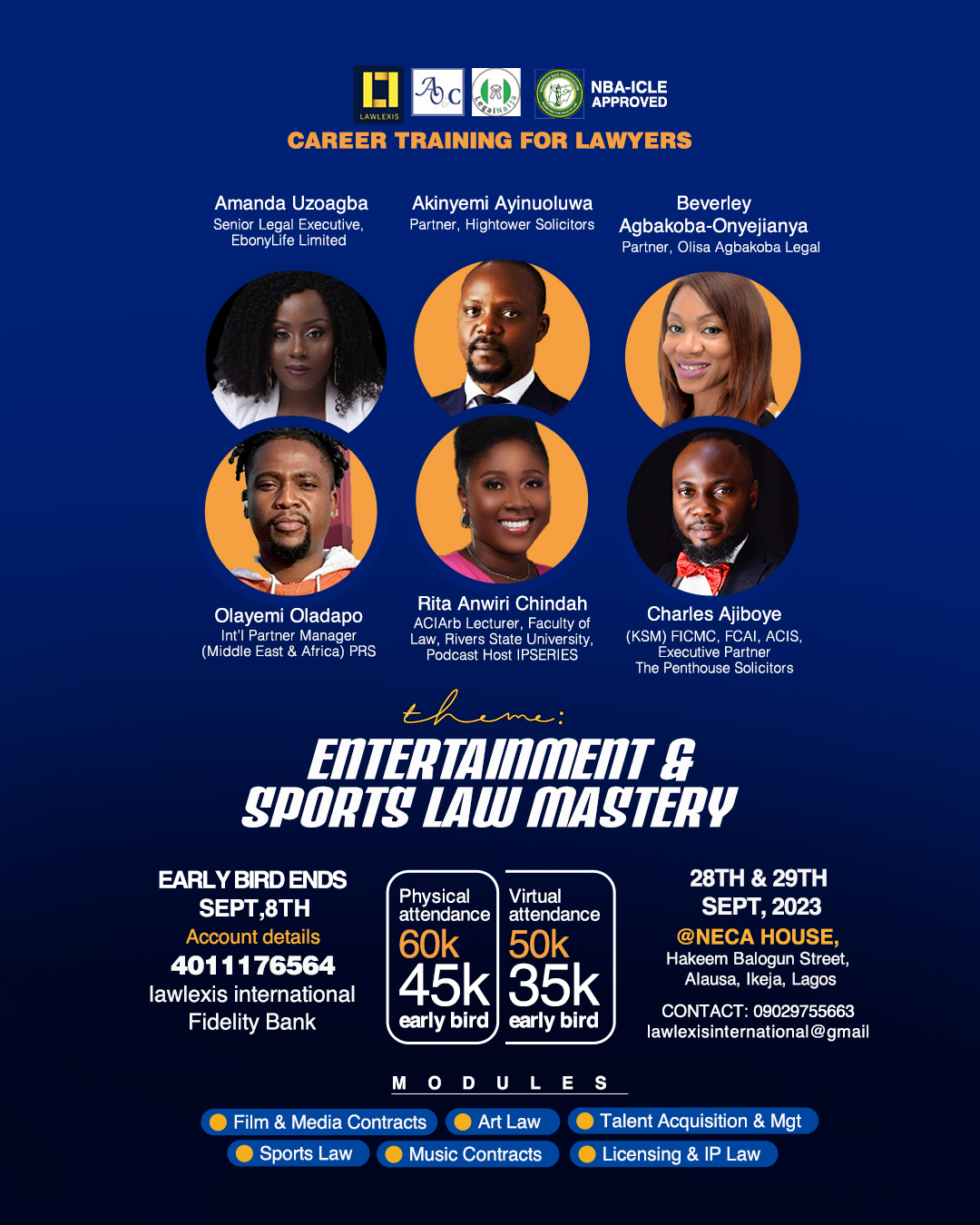

 Written by: TUALE CHARLES AJUYAH and NNADI, EZINNE TOCHUKWU
Written by: TUALE CHARLES AJUYAH and NNADI, EZINNE TOCHUKWU